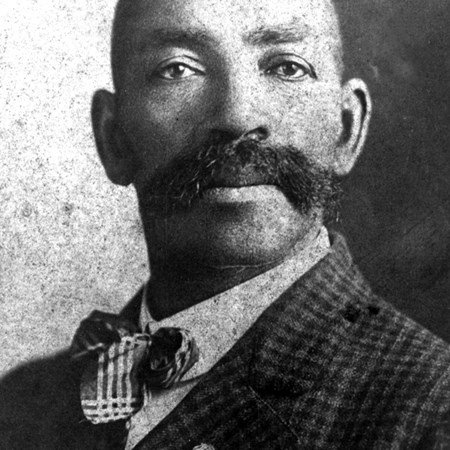Bass Reeves Stars in HBO’s Watchmen
It’s exciting to see Bass Reeves not just referenced, but even given hero status, in the HBO series “Watchmen,” which mixes real history with alternative history and science fiction.
Based on the original graphic novel of the same name, “Watchmen” contains plenty of sci-fi as well as a world where the U.S. wins the Vietnam War and Robert Redford runs for president. Additionally, it’s full of masked vigilantes facing off with a racist sect and policemen who hide the identities from the public and their families. The HBO series adheres to the original characters and storyline to some degree while also branching out with its own story ideas. That’s where Bass Reeves, a legendary lawman and real person, comes in.
The opening episode calls to light two real pieces of history that aren’t part of the original novel.
One is the Tulsa race massacre of 1921, a shockingly true event used in the series to call attention to the country’s most significant incident of racial terrorism that isn’t mentioned in history books. The show is set in Tulsa, starting in the 40s then moving ahead in time.

The second reference is to Bass Reeves, a legendary lawman and the first African American commissioned as a U.S. deputy marshal west of the Mississippi River.
In the show, Reeves is portrayed as a hero on the big screen of an old movie theater in a black and white, silent Western film. He captures a white criminal and says, “There will be no mob justice today. Trust in the law.” He’s in an outfit that looks a lot like the one worn by the “Watchmen” comic book superhero Hooded Justice. This sets the tone for the rest of the series in a big way as viewers have to encounter mob justice, deceitful lawmen, and masked vigilantes.
It’s no wonder Reeves was chosen as a hero for the show. In real life, Reeves served under Judge Isaac Parker, tracking outlaws in Indian Territory (present-day Oklahoma) and bringing them to justice in Parker’s courtroom. Reeves helped bring in notorious outlaws like Cherokee Bill, Colorado Bill and the Rufus Buck Gang. He was very successful as a marshal because he knew the country well and also knew tribal languages.
Serving 32 years under Judge Parker, Reeves brought in more outlaws from Indian Territory than anyone else even though he was an African American and was illiterate. Reeves was able to memorize the warrants for every suspect he was to arrest and bring to trial.
According to the Encyclopedia of Arkansas, “Reeves stood 6’2″ and weighed 180 pounds. He could shoot a pistol or rifle accurately with his right or left hand; settlers said Reeves could whip any two men with his bare hands. Reeves became a legend during his lifetime for his ability to catch criminals under trying circumstances.”
Born a slave in 1824, Reeves escaped to Indian Territory and bought land after the Emancipation Proclamation in what is today the Van Buren area. He married twice and had many children.
You can see a 25-foot work of art honoring this illustrious lawman at 200 Garrison Ave. in Fort Smith. The monument, titled “Into the Territory,” shows Reeves on horseback, rifle in hand. A faithful dog is at his side. The creation was the result of more than four years of fundraising by the Bass Reeves Legacy Initiative.
In addition to the statue, don’t miss exploring more about Reeve’s life and Judge Parker at the nearby National Historic Site.
A visit to the Fort Smith National Historic Site begins at the Visitor Center. Plan on spending at least 45 minutes touring the exhibits on the military, Trail of Tears, U.S. Marshals and the federal court, including two jails and the courtroom of Judge Parker.
On the grounds of the park you can see the site of the first fort, the Trail of Tears Overlook on the Arkansas River, the Commissary building, and reconstructed gallows.
